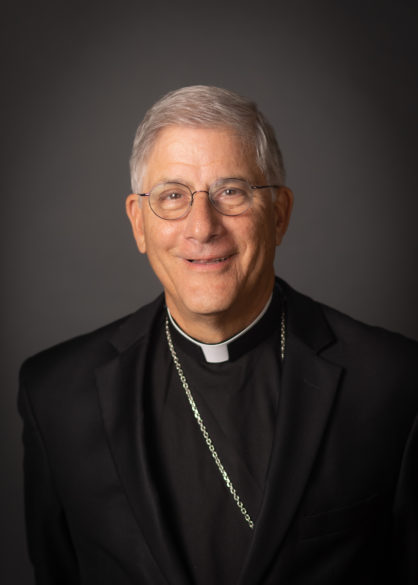Por Obispo Joseph R. Kopacz, D.D.
Después de tres años de reflexión, el Sínodo sobre la Sinodalidad llegó a su fin en la noche del 26 de octubre de 2024, cuando los 356 miembros de la asamblea se reunieron para votar el documento final. En un acto inesperado, el papa Francisco aprobó inmediatamente este documento, diciendo que no publicaría una exhortación apostólica postsinodal, que es el tipo de documento papal que suele seguir a un sínodo. Por lo tanto, este texto entra inmediatamente dentro del magisterio del Papa. Sin embargo, especificó que no era normativo. Sin embargo, ha sido un proceso pastoral notable que ha reunido a fieles de todo el mundo en estos últimos tres años.

Guiadas por el Espíritu Santo, las conversaciones comenzaron en la iglesia diocesana local y progresaron hasta producir documentos regionales y continentales. Los casi 400 delegados que se reunieron en Roma durante el mes de octubre del año pasado y este año, representando a nuestra Iglesia Una, Santa, Católica y Apostólica y pudieron desarrollar las voces de los fieles católicos de todo el mundo.
Por el momento, el documento sinodal está en italiano, pero el progreso de la traducción está girando para difundirlo a lo grande. No es sorprendente que el documento no marque el comienzo de una nueva era de enseñanza eclesiástica, como algunos estaban ansiosos. Pero la singularidad de este Sínodo se encuentra en las reuniones deliberativas y consultivas de los líderes de la iglesia que incluyeron a los ordenados, profesos y laicos desde su inicio en 2021.
Estos encuentros sustantivos han sacado a la luz los temas de la comunión, de la participación y de la misión, con tiempo suficiente para mirar larga y amorosamente la realidad con el fin de ver, juzgar y actuar mejor. Esta ampliación del el Cuerpo de Cristo representaba nuestra universalidad. Las fotos de los delegados reunidos en Roma retrataron esta visión, cuyo arduo trabajo culminó en el documento final. Sin embargo, los procesos deliberativos y consultivos no pueden limitarse a procesos extraordinarios como el Sínodo sobre la sinodalidad, sino que deben integrarse en la vida de la Iglesia a todos los niveles y en todo lugar. La ampliación de nuestra visión, sentido de misión y alcance de los ministerios impregna el trabajo de los delegados, y el impacto de sus labores bajo la mirada e inspiración del Espíritu Santo será desentrañado, reflexionado y puesto en práctica en los próximos años.
A lo largo del documento hay un llamado repetido a la unidad en el Cuerpo de Cristo, y a un compromiso renovado con la misión como discípulos alegres del Señor crucificado y resucitado. El domingo 27 de octubre, el Papa presidió la misa final del sínodo en la Basílica de San Pedro. Rodeado de los delegados mundiales de la cumbre, el Papa Francisco animó a la Iglesia a ser atentos a “los desafíos de nuestro tiempo, la urgencia de la evangelización y las muchas heridas que afligen a la humanidad”.
“Una Iglesia sedentaria, que se retira inadvertidamente de la vida y se confina a los márgenes de la realidad, es una Iglesia que corre el riesgo de permanecer ciega y sentirse cómoda con su propio malestar”, dijo el Papa. “Si nos quedamos atrapados en nuestra ceguera, no lograremos comprender continuamente la urgencia de dar una respuesta pastoral a los muchos problemas de nuestro mundo”.
Al poner fin oficialmente al proceso sinodal de tres años, el Papa Francisco declaró que ahora es el momento de que como Iglesia “pongamos manos a la obra” y “llevemos la alegría del Evangelio por las calles del mundo”.
Los últimos tres años de sinodalidad mundial son un faro de luz a medida que nos embarcamos en el Año Jubilar de la Esperanza que comenzará durante la temporada navideña y continuará a lo largo de 2025. La alegría del Evangelio es nuestro don al mundo que clama con dolor por la unidad y la paz.
(Nota del editor: Al cierre de esta edición, el 1 de noviembre de 2024, el documento final de la XVI Asamblea del Sínodo de los Obispos solo estaba disponible en el original italiano. Visite https://www.synod.va/en.html en los próximos días para obtener traducciones de idiomas adicionales).










